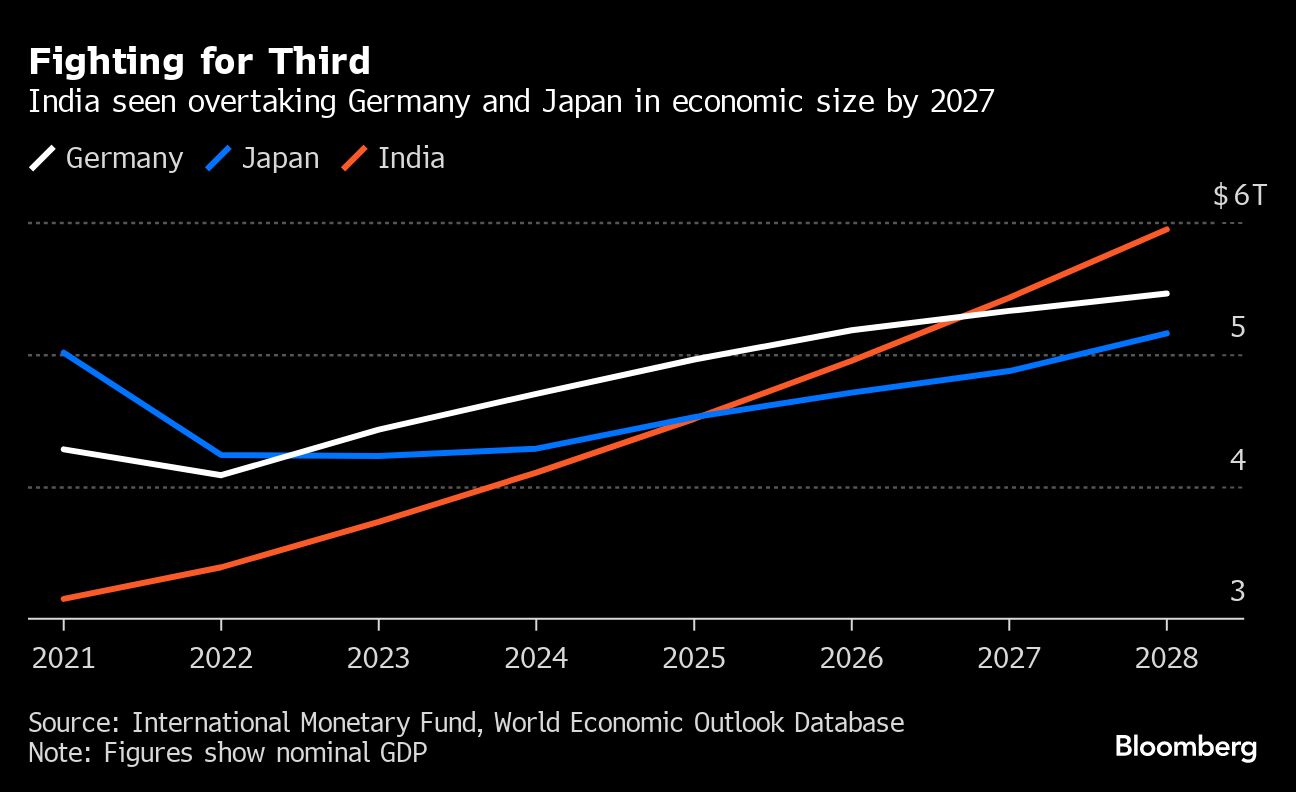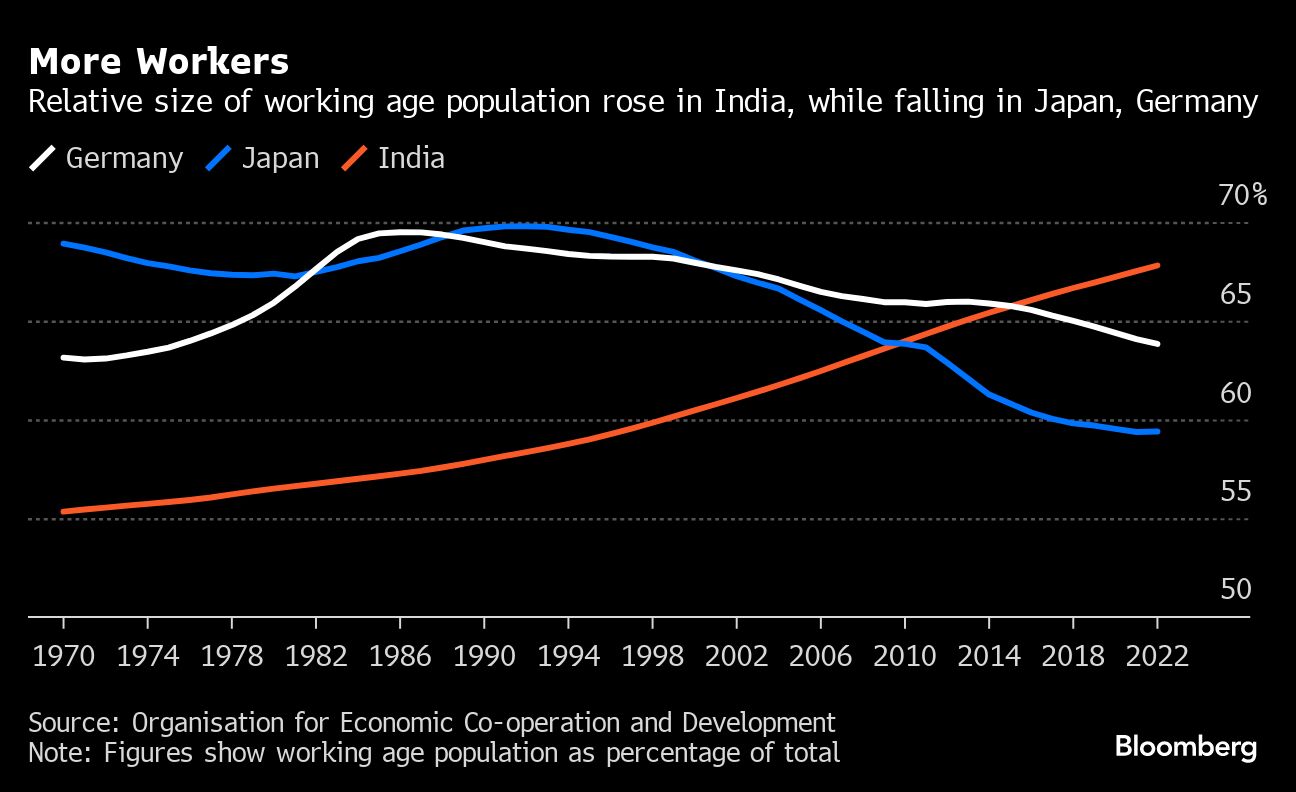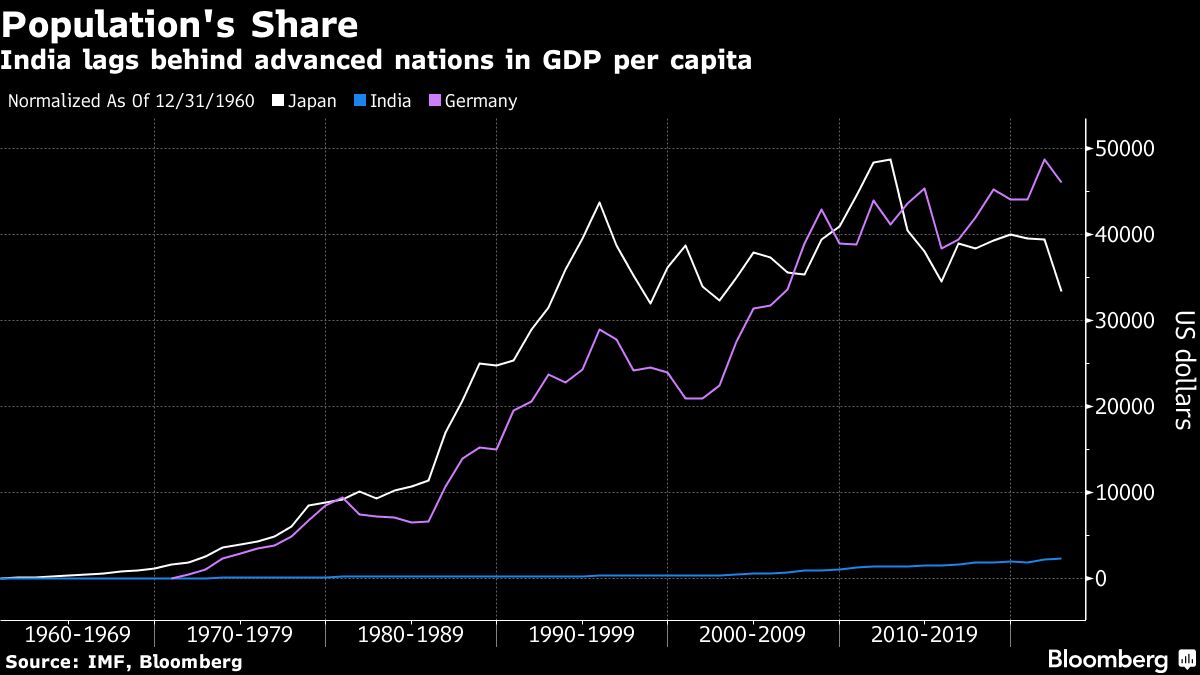Japan's GDP Set to Confirm Slip to Fourth-largest Economy Last Year
edgeinvest
Publish date: Wed, 14 Feb 2024, 12:15 PM
(Feb 13): Japan’s latest growth figures are set to confirm it slipped to fourth-largest economy in the world last year, a development that reflects the impact of its feeble currency and ageing demographics.
While the economy is seen returning to annualised growth of 1.2% in the fourth quarter after a bruising contraction in the summer, figures for the calendar year due Thursday are almost certain to show the value of output falling behind Germany’s in dollar terms. India’s economy, meanwhile, is poised to overtake both in the next few years.
For a country once tipped to eventually boast the world’s largest economy, the latest slide down the list of economic rankings will raise fresh questions for a domestic audience about the nation’s trajectory.
For now, the hand-wringing among Japanese policymakers and the public has been less acute than when China’s economy raced past Japan’s in 2010 en route to becoming more than four times bigger now.
One reason for the relative calm is a recognition that comparisons have been distorted by acute currency moves. Other factors are the uninspiring state of Germany’s economy and signs of a fresh dawn in Japan, with its stock market soaring and the central bank poised to raise interest rates for the first time since 2007. A solid showing in the data due Feb 15 would be another green light for the Bank of Japan to move.
Hideo Kumano, an executive economist at Dai-Ichi Life Research Institute, said the main factor behind Japan’s gross domestic product (GDP) decline is currency movements. “Cheap Japan is making the Japanese economy smaller,” he said. “Japan has become a lone loser, falling below Germany, which is struggling so much in real terms.”
International Monetary Fund (IMF) figures show Japan’s economy shrank in dollar terms to around US$4.2 trillion (RM20.02 trillion) in 2023 from US$6.3 trillion in 2012, but that’s largely down to Japan’s currency plunging from a whisker under ¥80 (RM2.55) to the dollar to around ¥141 last year. In nominal yen terms, the economy has likely grown more than 12% in that span.
At the same time, Germany’s sputtering economy hardly offers a model of where Japan is going wrong. The news of the economy overtaking Japan has gained almost no traction there, as public discontent over economic policy simmers amid ongoing inflation, soaring energy prices and stalling growth.
If anything, the two economies with their ageing populations, scarcity of natural resources and their reliance on exports and cars have more in common when compared with India, the economy that is set to overtake Japan in 2026 and Germany in 2027, according to IMF figures.
Japan is further along the demographic downswing. While Germany is facing a dwindling supply of workers, the trend is clearer in Japan where the total population has been falling steadily since around 2010. That’s led to chronic labour shortages that are expected to worsen, as the birth rate remains well below the replacement rate. Japan’s fourth-quarter GDP data is expected to show private consumption flat on quarter, increasing the economy’s reliance on external demand.
In contrast, India’s population overtook China’s last year, and the nation is expected to maintain growth for decades to come. With over two-thirds of its people of working age — between 15 and 64 years old — India is expected to produce more goods and drive technological innovation, in contrast to many Asian peers grappling with shrinking and ageing populations.
“Favourable demographics will add to potential growth over the forecast horizon,” said Santanu Sengupta, Goldman Sachs Research’s economist for India, in a report. “India’s large population is clearly an opportunity, but the challenge is productively using the labour force, by increasing the labour force participation rate.”
India could gain a further leg up on China if it deregulates further and reduces tariffs to attract more investment, as companies seek to reduce geopolitical risks associated with China. Indian Prime Minister Narendra Modi’s government is providing financial incentives worth billions of dollars to promote domestic manufacturing, and turn India into a global export hub.
The US$24 billion programme is showing some success with firms like Apple Inc and Samsung Electronics Co building more products in the country. The goal is to increase the sector’s contribution to GDP to 25% by 2025.
Japan is doing its part to absorb some of that growth potential, setting aside public funds to boost its capacity to make and secure semiconductors at home as part of a long-term goal of tripling sales of domestically produced semiconductors to more than ¥15 trillion by 2030.
“Japan needs to establish more technology-intensive industries domestically, for example by building research and development centres,” Dai-Ichi Life Research Institute’s Kumano said.
Another reason Japanese aren’t fretting too much over losing ground in global economy rankings is the nation’s stable living standards. The shrinking population has more or less helped sustain GDP on a per capita basis in local currency terms.
Still, Japan will need more people to produce goods and consume while paying taxes. Bringing in more foreign workers is a small step in that direction.
Source: TheEdge - 14 Feb 2024
More articles on CEO Morning Brief
Created by edgeinvest | Jul 24, 2024
Created by edgeinvest | Jul 24, 2024
Created by edgeinvest | Jul 24, 2024
Created by edgeinvest | Jul 24, 2024
Created by edgeinvest | Jul 24, 2024
Created by edgeinvest | Jul 24, 2024
Created by edgeinvest | Jul 24, 2024
Created by edgeinvest | Jul 24, 2024
























